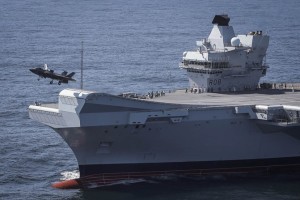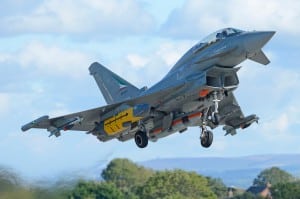The United Kingdom’s top Air Force official said Turkey being taken out of the F-35 partnership will not negatively affect them while noting they are looking at Sweden’s Gripen as a model for the next-generation Tempest program.
While Turkey’s removal from the F-35 program impacts the U.K., Air Chief Marshal Mike Wigston, Chief of the Air Staff, said it is not a negative impact.

“Its requiring for all partner nations – there’s a period of readjustment, but we see no impact on our program, both supporting the in-service fleet and the delivery of our aircraft on orders,” Wigston said at an Air Force Association event on Oct. 11.
“So we’ve taken delivery of 18 [F-35s] so far with more to come and the program remains on schedule.”
In July, the White House announced Turkey’s official removal from the F-35 program due to its decision to purchase the Russian-built S-400 air defense system (Defense Daily, July 17).
The removal meant Turkey will not only not receive over 100 F-35s it planned to purchase, but was being removed from the supply chain. Turkey was producing over 900 parts for the aircraft and was set to receive $9 billion in projected workshare over the life of the program. That included $1 billion in current industrial participation commitments.
As of September, Turkey still remained an F-35 development partner and had not yet been removed from the program (Defense Daily, Sept. 11).
Separately, Wigston compared the U.K.’s hopes for the Tempest program to how Sweden and Saab have worked on the Gripen and Gripen-E fighter aircraft.
He noted the U.K. believes it will achieve a five-year development cycle for Tempest.
“So we have to get on with that design cycle. For everything I see, the speed and agility and the teamworking that the RAF and the ministry of defense team alongside the tempest consortium – everything in that leaves me confident that we can do this.”

The Tempest fighter jet is planned to replace the U.K.’s fleet of Eurofighter Typhoons by the 2040s. The Typhoons will begin leaving service in the 2030s. By last year the U.K. Ministry of Defense had set up a joint program office for Tempest with Britain’s BAE Systems and Rolls-Royce, Italy’s Leonardo, and MBDA (Defense Daily, Aug. 7, 2018).
In July, the U.K. and Sweden signed a memorandum of understanding to work on joint combat air development and acquisition program, including new concepts for future air requirements.
“The partnership between the U.K. and Sweden around Tempest is actually critical to that because I think the culture that – when you look what Saab did around Gripen and the Gripen E and the speed with which they did that and frankly the costs that they achieved in that spiral development – I look at that and I say that is exactly what I want,” Wigston said.
“And I think the partnership with Saab and Sweden in that regard is absolutely critical to the success of Tempest,” he added.